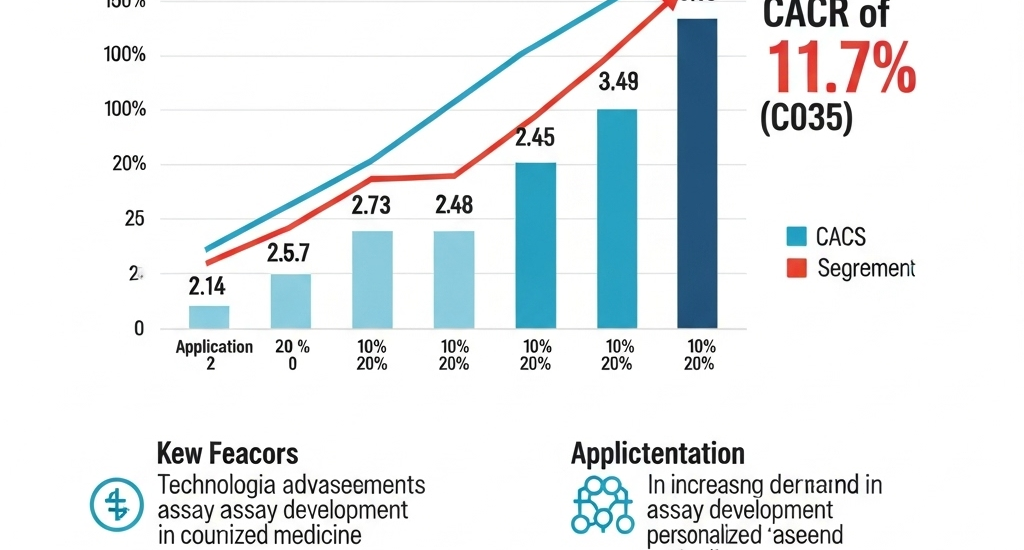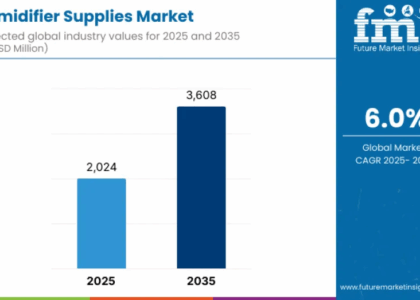According to Future Market Insights (FMI), the global Dual Biomarker Assays Market is expected to grow significantly in the coming years. But let’s be clear: growth projections mean nothing if the healthcare ecosystem refuses to act.
The global dual biomarker assays market is expected to expand from USD 1.4 billion in 2025 to approximately USD 4.3 billion by 2035, growing at a compound annual growth rate (CAGR) of 11.7% over the forecast period. Multi-biomarker testing platforms are gaining momentum as clinicians prioritize early disease detection, therapeutic monitoring, and treatment stratification.
As disease complexity deepens and public health costs spiral, dual‑biomarker assays represent one of the most promising tools in modern medicine. They can detect disease earlier, personalize treatments, and dramatically reduce diagnostic ambiguity. Yet adoption remains sluggish, fragmented, and dangerously behind the science.
Get Sample Report: – https://www.futuremarketinsights.com/reports/sample/rep-gb-22362
🧬 One Marker Is No Longer Enough
We’re living in a molecular age. Still, most hospitals cling to outdated, single-marker tests designed for yesterday’s diseases. Dual-biomarker assays offer a clear upgrade—pinpointing disease with greater precision and catching conditions that traditional methods routinely miss.
FMI notes a surge in demand from cancer clinics, research centers, and diagnostic labs. It’s not hard to see why. When two biomarkers are measured in tandem, physicians get a clearer, more reliable snapshot of what’s happening in the body.
🔥 Innovation Is Outpacing Infrastructure
The science is sound. The clinical need is real. What’s broken is everything in between.
As FMI highlights, dual-biomarker tests are often delayed by a lack of standardization, uneven infrastructure, and painfully slow regulatory processes. In short, we’re letting bureaucracy throttle progress.
Worse, test developers are expected to jump through outdated hoops to validate modern diagnostics. That’s like asking Tesla to prove it can build a horse-drawn carriage.
🇺🇸 America Has the Edge—And Is Wasting It
The U.S. leads the world in biotech. We fund the research. We train the talent. But we bury innovation under paperwork and leave adoption to a patchwork of insurance providers and hospital systems with wildly inconsistent standards.
FMI confirms North America holds a dominant market share. But dominance means nothing without delivery. And right now, even the most promising dual-marker assays are stuck in academic limbo or cost-prohibitive pipelines.
Meanwhile, Asia-Pacific is catching up—fast. Countries like China, India, and South Korea are making massive diagnostic investments, building from the ground up. If the U.S. keeps hesitating, it won’t just lose market share. It’ll lose lives.
🚧 Fix the System—Or Step Aside
FMI’s report outlines what needs to happen: better validation, faster approvals, clear reimbursement paths. But reports don’t drive change. People do. Leaders in government, healthcare, and industry need to stop talking and start moving.
Because here’s what no one wants to say out loud: if dual-biomarker assays were the default diagnostic tool today, thousands—maybe millions—of patients would receive earlier, more accurate treatment. And they aren’t.
⚠️ Final Word
We’re not dealing with an innovation problem. We’re dealing with a courage problem.
Precision diagnostics are already here. The data is in. The stakes are high.
Either we rebuild the system around the tools we’ve created—or admit we’re too paralyzed by legacy thinking to save lives when it matters most.
Explore In-Depth Analysis-Click Here to Access the Report:- https://www.futuremarketinsights.com/reports/dual-biomarker-assays-market
Key Segments Studied in the Dual Biomarker Assays Market
By Assay Type:
- By assay type, the industry is segmented into In-situ Hybridization (ISH) Assay, Immunochemistry Assay, Next-Generation Sequencing (NGS) Kits, and Others.
By Indication:
- By indication, the industry includes Human Papillomavirus (HPV), Alzheimer’s Disease, Cancer, B-Cell Lymphoma, Breast Cancer, Non-Small Cell Lung Cancer (NSCLC), Gastrointestinal Cancer, and Glioma.
By End User:
- By end user, the industry is categorized into Hospitals, Diagnostic Laboratories, Cancer Research Institutes, and Specialty Clinics.






